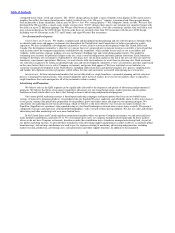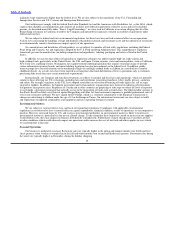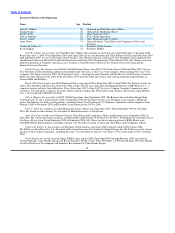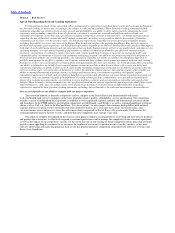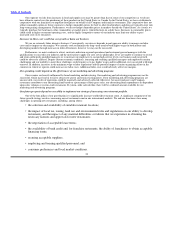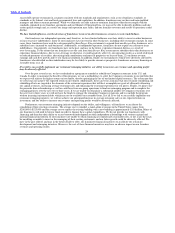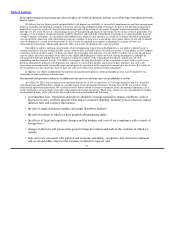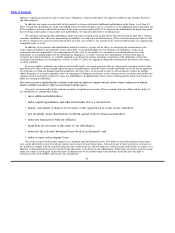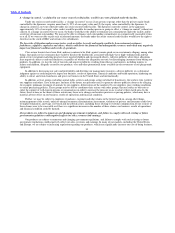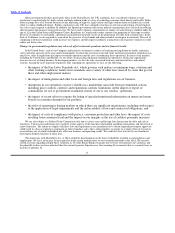Burger King 2010 Annual Report Download - page 24
Download and view the complete annual report
Please find page 24 of the 2010 Burger King annual report below. You can navigate through the pages in the report by either clicking on the pages listed below, or by using the keyword search tool below to find specific information within the annual report.
Table of Contents
Our exposure to risks from increases in food and supply costs may be greater than that of some of our competitors as we do not
have ultimate control over the purchasing of these products in the United States or Canada. In the United States, we have established a
cooperative with our franchisees to negotiate food prices on behalf of all Company and franchise restaurants. This cooperative does not
utilize commodity option or future contracts to hedge commodity prices for beef or other food products and does not typically enter into
long−term pricing arrangements. Furthermore, we do not hedge commodity prices in markets outside the United States. As a result, we
typically purchase beef and many other commodities at market prices, which fluctuate on a daily basis. Increases in commodity prices
could result in higher restaurant operating costs, and the highly competitive nature of our industry may limit our ability to pass
increased costs on to our guests.
Increases in labor costs could slow our growth or harm our business.
We are an extremely labor intensive business. Consequently, our success depends in part upon our ability to manage our labor
costs and its impact on our margins. We currently seek to minimize the long−term trend toward higher wages in both mature and
developing markets through increases in labor efficiencies, however we may not be successful.
Furthermore, we must continue to attract, motivate and retain regional operational and restaurant general managers with the
qualifications to succeed in our industry and the motivation to apply our core service philosophy. If we are unable to continue to recruit
and retain sufficiently qualified managers or to motivate our employees to sustain high service levels, our business and our growth
could be adversely affected. Despite current economic conditions, attracting and retaining qualified managers and employees remains
challenging and our inability to meet these challenges could require us to pay higher wages and/or additional costs associated with high
turnover. In addition, increases in the minimum wage or labor regulations and the potential impact of union organizing efforts in the
countries in which we operate could increase our labor costs. Additional labor costs could adversely affect our margins.
Our operating results depend on the effectiveness of our marketing and advertising programs.
Our revenues are heavily influenced by brand marketing and advertising. Our marketing and advertising programs may not be
successful, which may lead us to fail to attract new guests and retain existing guests. If our marketing and advertising programs are
unsuccessful, our results of operations could be materially and adversely affected. Moreover, because franchisees and Company
restaurants contribute to our advertising fund based on a percentage of their gross sales, our advertising fund expenditures are dependent
upon sales volumes at system−wide restaurants. If system−wide sales decline, there will be a reduced amount available for our
marketing and advertising programs.
Our future prospects depend on our ability to implement our strategy of increasing our restaurant portfolio.
One of the four pillars of our growth plan is to significantly increase worldwide restaurant count. A significant component of our
future growth strategy involves increasing our net restaurant count in our international markets. We and our franchisees face many
challenges in opening new restaurants, including, among others:
• the selection and availability of suitable restaurant locations;
• the impact of local tax, zoning, land use and environmental rules and regulations on our ability to develop
restaurants, and the impact of any material difficulties or failures that we experience in obtaining the
necessary licenses and approvals for new restaurants;
• the negotiation of acceptable lease terms;
• the availability of bank credit and, for franchise restaurants, the ability of franchisees to obtain acceptable
financing terms;
• securing acceptable suppliers;
• employing and training qualified personnel; and
• consumer preferences and local market conditions.
22


